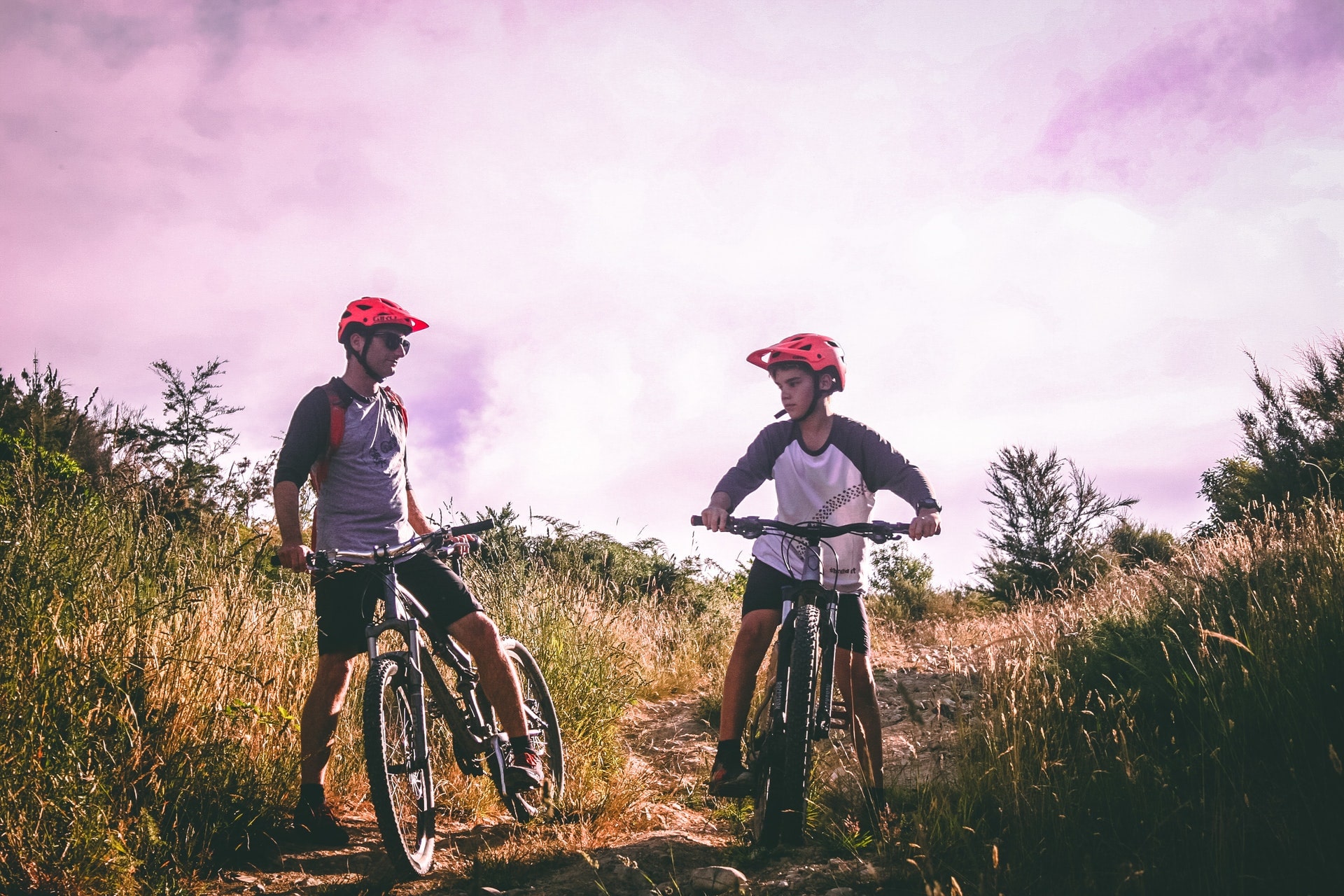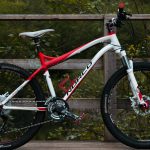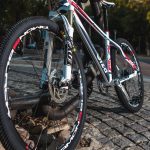When you have a bike that fits you like a glove and seems to almost anticipate how you want to move on trails, it’s a beautiful thing. But how to get the right size?
Finding the right size mountain bike starts with picking the right size frame, and then adjust the seat height, seat angle, and all of the other things that dial in the bike to match your needs. What size bike is right for you depends on many factors so it’s worth taking the time so you can enjoy it properly.
Pick the Right Bike Frame Size
Picking the correct size frame for your mountain bike is crucial. If the frame size is wrong for you, you’ll never be tweak and adjust the bike to be comfortable and easy to control. Especially if you are starting out, getting the bike setup and right is the first step. So mountain bike sizing can be a big deal to enjoying your ride and being able to reach the ground when you have to stop for a break.
While many manufacturers have general classifications such as S, M, or L to designate Small, Medium, or Large, what we really want to look at is the precise size of the bike frame. Mountain bikes are measured as the distance from the center of the crank to the top of the frame at the seat tube. If in doubt, choose the smaller of two sizes as it’s easier to adjust up than to have a bike too big with no way to adjust it for easier use.
While your height gives a good indicator about what bike size to check out first, in reality your inseam length is the best indicator as it’s your leg length and that is the real factor.
General height to bike size guide
| Rider Height | Mountain Bike Frame Size |
| 4’11” – 5’3″ | 13 – 15 inches |
| 5’3″ – 5’7″ | 15 – 17 inches |
| 5’7″ – 5’11” | 17 – 19 inches |
| 6’0″ – 6’2″ | 19 – 21 inches |
| 6’2″ – 6’4″ | 21 – 23 inches |
| 6’4″+ | 23+ inches |
The numbers in the bike size chart are general guidelines as within a given group you may have 2-3 different frame size choices.
How to Choose the Right Size In Person
The first thing you want to do is to put on your biking shoes to test the bike heights in person.
This first sizing test is sometimes called the Standover Height Test. You want to straddle the bike’s top bar while holding the bike upright. Imagine you had to stop the bike while biking and hopped off the seat and you’re standing there straddling the bike. In this position, stand flat-footed and ensure that you clear the top bar of the bike by at least 2 inches.
The idea here is that you want to make sure you can stop the bike and stand there without hurting yourself. If you don’t clear it, the bike is too big and you want to keep going down sizes until it fits.
If you are buying the bike online, you will want to measure you inseam length and make sure it’s at least 2 inches more than the listed Standover Height.
If you choose the correct frame size, then everything else can be adjusted so your bike is suited so your needs.
Choose the Right Seat Height
Choosing the right seat height is only second to bike size. The right saddle height is crucial in both comfort but also the correct angles to apply your legs full power.
If the seat is too low, you never get to the peak power where your legs are 80-90% extended.
The right seat height depends on conditions
If you’re climbing or riding across flat land, you’ll want a higher seat position. To adjust for this, push one pedal down to the lowest crank position. In this position, your leg should be almost fully extended. If you plan on Cross-Country Biking, then this is the best setting for you for example. It really depends on the riders needs.
If you want to set the seat at a better position for downhill, you’ll want to lower it 2-3 inches. This way you can shift your weight back to keep yourself in control and centered on the bike. Keeping yourself with a lower center of gravity is key.
The thing is, it’s not so easy to constantly adjust so many new mountain bikes come with a dropper post. A dropper post like this one on Amazon makes it so you can raise and lower the post to your upper and lower levels with the press of a button. You can change it dozens of times on a ride for the best of both worlds.
Adjust the Front-and-Back Seat Position
In addition to the height, adjusting the saddle so that it is centered correctly.
With your foot on the pedal at the 3 o’clock position, your knee should be vertically above the center of the pedal. You can lower the saddle bolt and slide the seat front or back to line it up like this.
If you seat position is right and your handlebars are set right, you’ll be able to reach your handlebars with arms slightly bent.
Adjust Your Saddle Angle
Lastly, adjust your saddle so that it is parallel with the ground.
Now Your Mountain Bike Fits You
With the right size frame and properly adjusted seat, your bike is now the right size for you. If you need more adjustment such as you are stretching for the handlebars, there are different handlebar stems that can relocate the handlebar location.
One thing to remember is that with all of the new mountain bike tire sizes coming out, it effects the overall height the bike and your frame and if it’s the right size bike for you. If possible, do this with a 29″ tire so if anything the bike sits just a tiny bit lower than expected. Road bikes commonly have 27.5″ tires and especially 29″ is more common lately.
Having the right angle of your body to the pedals and the handlebars is key to having your bike sized properly to your body and riding style. Having a mountain bike that fits you allows you reduce stress on your knees and forearms when you’re out on the mtb trails. Otherwise, things like Tennis Elbow can develop when your natural position isn’t correct. Sometimes you also need to pull over to let people by on smaller trails and it’s sure handy when the bike fits right and you can comfortably reach the ground.
Now the only left to do is to get all of your biking gear essentials and toss them into a backpack of biking goodies and go have some fun! If you’re starting out, you may want to look at a bigger list of important biking gear and accessories to get going.






